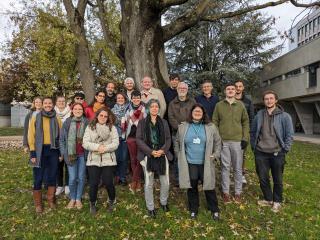Bioinformatics, Phylogeny and Evolutionary Genomics Group
Members
Maîtresse de conférences
UCBL
Tel: 04 72 44 84 87

Professeure des universités
UCBL
Tel: 33 04 26 23 44 76
Doctorante
UCBL
Enseignant-chercheur CPJ
UCBL

Directeur de recherche
CNRS
Tel: 33 04 72 44 62 97
Doctorant
CNRS
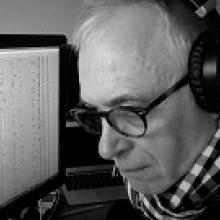
Professeur d'université émérite
UCBL
Tel: 04 72 44 85 60
Ingénieur d'études CDD
CNRS
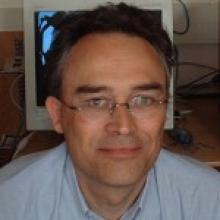
Directeur de recherche
CNRS
Tel: 33 04 72 43 11 67

Maîtresse de conférences
UCBL
Tel: 33 04 72 43 29 18
Doctorante
UCBL

Chargée de recherche
CNRS
Tel: 33 04 72 44 85 60
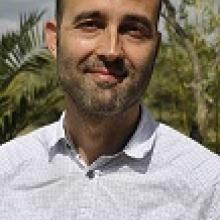
Directeur de recherche
CNRS
Tel: 04 72 44 84 87

Chargée de recherche
CNRS
Tel: 04 72 43 13 44
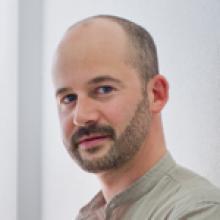
Directeur de recherche
CNRS

Maître de conférences
UCBL
Tel: 04 72 43 35 83

Chargée de recherche
CNRS
Tel: 04 72 44 81 42
Doctorant
CNRS
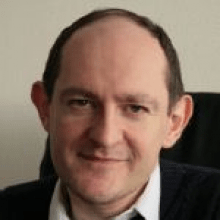
Directeur de recherche
CNRS
Tel: 33 04 72 44 62 96

Chargée de recherche
CNRS
Tel: 04 72 43 26 28
Doctorant
UCBL
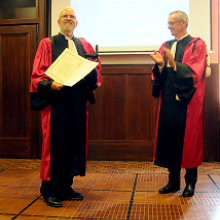
Chercheur invité
UCBL
Our group focuses on two main axes: phylogenomics (i.e. the inference of evolutionary history based on genomics data) and evolutionary genomics (understanding the molecular and population processes that drive genome evolution). We see genomes both as a subject of research (how do genomes evolve, why are they structured the way they are?), but also as a main source of empirical knowledge about the macroevolutionary patterns (what do they tell us about the history of life on Earth?), or about the phenotypes and life-history strategies of organisms. Our works heavily rely on methodological developments (bioinformatics, modeling and statistical inference).
Evolution of genome architecture and expression
Genomes are the result of a long-term evolutionary process, shaped by multiple evolutionary forces. Some genomic features are adaptive (i.e. are beneficial for the fitness of organisms), others result from non-adaptive processes (random drift and biased gene conversion - BGC) or are caused by conflicts between multiple levels of selection (e.g. meiotic drive or the spread of selfish genetic elements). We explore different aspects of genome architecture (base composition landscapes, genome structure and size, impact of transposable elements, …) or functioning (gene expression, lncRNAs, epigenetic landscapes, …), and try to disentangle the relative contribution of adaptive and non-adaptive processes to their evolution. For this purpose, we consider both the molecular mechanisms (mutation, repair, recombination) and the population processes (selection, drift, BGC, …) that shape genetic variation.
Phylogenomics
We are interested in reconstructing the history of life on Earth. This research unfolds along several axes. First, we develop phylogenomic databases of aligned genetic sequences (e.g. BIBI, RiboDB or HOGENOM). Second, we conduct methodological research on how to accurately reconstruct deep phylogenies, infer divergence times, reconstruct ancestral genetic sequences, gene repertoires and life-history traits. This methodological work is translated into publicly available software programs (e.g. SeaView, PhyloBayes, Coevol). Finally, we apply these approaches to several important problems, among which: reconstructing the phylogeny of animals, of archaea, or the global tree of life; using phylogenies and ancestral gene repertoires to investigate the evolution of complex systems and the emergence of molecular and cellular functions in the three domains of life; reconstructing ancestral genetic sequences, a research activity that has industrial and biotechnological applications.
Teaching and outreach
We teach at University Lyon 1 (Master Bioinfo@Lyon), INSA, ENS Lyon, we organize bioinformatics internships. We regularly give conferences on evolution (tree of life, human evolution, genetic diversity, …).
Prospective students and postdocs are invited to apply, as we often welcome visitors for internships or research projects.
Keywords: Molecular evolution and Population Genomics; Phylogenomics; Computational Genomics; Comparative genomics; Bioinformatics; Statistical inference.
Publications
Display of 31 to 60 publications on 1109 in total
Genome Streamlining: Effect of Mutation Rate and Population Size on Genome Size Reduction
Genome Biology and Evolution . 16
DOI: 10.1093/gbe/evae250
Journal article
see the publicationDivergence in expression of a singing-related neuro-plasticity gene in the brains of two Ficedula flycatchers and their hybrids
G3 .
Journal article
see the publicationMonitoring biodiversity of an alpine watershed using eDNA metabarcoding and ecological surveys: a collaborative work between students, scientists and citizens
Biennial meeting of the French Society of Ecology and Evolution .
Poster
see the publicationEffective population size does not explain long-term variation in genome size and transposable element content in animals
eLife .
Journal article
see the publicationFrom Inquilines to Gall Inducers: Genomic Signature of a Life-Style Transition in Synergus Gall Wasps
Genome Biology and Evolution . 12 : 2060 - 2073
DOI: 10.1093/gbe/evaa204
Journal article
see the publicationHijackers, hitchhikers, or co-drivers? The mysteries of mobilizable genetic elements
PLoS Biology . 22 ( 8 ) : e3002796
Journal article
see the publicationA type IVB secretion system contributes to the pathogenicity of Yersinia pseudotuberculosis strains responsible for the Far East scarlet-like fever
Preprint
see the publicationEvo‐Scope : Fully automated assessment of correlated evolution on phylogenetic trees
Methods in Ecology and Evolution . 15 ( 2 ) : 282 - 289
Journal article
see the publicationBridging the gap between the evolutionary dynamics and the molecular mechanisms of meiosis.
RecomBern .
Conference paper
see the publicationHigh prevalence of Prdm9-independent recombination hotspots in placental mammals
Probabilistic Modeling in Genomics Conference : ProbGen 2024 .
Conference paper
see the publicationThe characterization of ancient Methanococcales malate dehydrogenases reveals that strong thermal stability prevents unfolding under intense γ-irradiation
Molecular Biology and Evolution .
Journal article
see the publicationPrevalence of PRDM9-dependent vs PRDM9-independent recombination hotspots in animals
RecomBern .
Conference paper
see the publicationThe evolution of GC-biased gene conversion by means of natural selection
Preprint
see the publicationThe Inca child of the Quehuar volcano: Stable isotopes clue to geographic origin and seasonal diet, with putative seaweed consumption
Journal of Archaeological Science: Reports . 59 : 104784
Journal article
see the publicationThe porphyran degradation system is complete, phylogenetically and geographically diverse across the gut microbiota of East Asian populations
Preprint
see the publicationParticular sequence characteristics induce bias in the detection of polymorphic transposable element insertions
Preprint
see the publicationSmall ruminants versus endogenous retroviruses: an evolutive showdown still in progress in the domestic goat genome
International congress on transposable elements .
Poster
see the publicationA genome-wide study of ruminants reveals two endogenous retrovirus families still active in goats
Preprint
see the publicationSMBE Secretary’s Report
Molecular Biology and Evolution . 41 ( 6 )
Journal article
see the publicationLook4LTRs: a Long terminal repeat retrotransposon detection tool capable of cross species studies and discovering recently nested repeats
Mobile DNA . 15 ( 1 ) : 8
Journal article
see the publicationDiversité et diversification des Pectobacteriaceae, une famille de bactéries phytopathogènes d’importance mondiale
Cahiers Scientifiques de la Fondation Pierre Vérots . ( 10 ) : 19-29
Journal article
see the publicationISMB/ECCB 2023 organization benefited from the strengths of the French bioinformatics community
Bioinformatics Advances . 4 ( 1 ) : vbae040
Journal article
see the publicationBradyrhizobium hardenbergiae sp. nov., isolated from Hardenbergia violacea in Australia, represents a novel basal lineage of the B. elkanii supergroup
Preprint
see the publicationA Wright–Fisher graph model and the impact of directional selection on genetic variation
Theoretical Population Biology . 159 : 13-24
Journal article
see the publicationInvestigating demic versus cultural diffusion and sex bias in the spread of Austronesian languages in Vietnam
PLoS ONE . 19 ( 6 ) : e0304964
Journal article
see the publicationComplete mitochondrial genomes of patients from Thailand with cardiovascular diseases
PLoS ONE . 19 ( 7 ) : e0307036
Journal article
see the publicationGTDrift: a resource for exploring the interplay between genetic drift, genomic and transcriptomic characteristics in eukaryotes
NAR Genomics and Bioinformatics . 6 ( 2 ) : lqae064
Journal article
see the publicationRegulatory and evolutionary impact of DNA methylation in two songbird species and their naturally occurring F1 hybrids
BMC Biology . 22 ( 1 ) : 124
Journal article
see the publicationHigh prevalence of PRDM9-independent recombination hotspots in placental mammals
Proceedings of the National Academy of Sciences of the United States of America . 121 ( 23 ) : e2401973121
Journal article
see the publication
